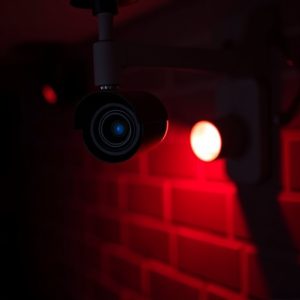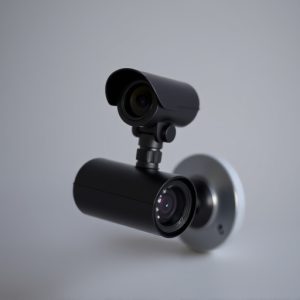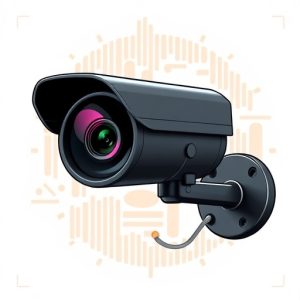Accountability and Privacy: The Impact of Small Spy Cameras with Audio in Law Enforcement
Small spy cameras with audio have become integral tools for modern law enforcement, significantly en…….
Small spy cameras with audio have become integral tools for modern law enforcement, significantly enhancing transparency and accountability. These devices capture both visual and auditory evidence of interactions between officers and the public, providing clear documentation that is crucial for legal proceedings and for ensuring ethical standards are upheld. The advanced technology within these compact units offers superior sound capture with directional microphones that filter out background noise, even in challenging environments, and high-resolution audio processors that ensure crisp recording quality. With solid-state memory cards and cloud storage integration, these cameras can record for extended periods without compromising on quality. Real-time audio monitoring, voice-activated recording, and automatic overwrite systems further facilitate the accurate documentation of law enforcement activities. However, the widespread use of these devices also sparkes a debate on privacy and legal boundaries, emphasizing the need for careful policy development to balance public safety with individual privacy rights. The integration of these cameras has already shown positive outcomes in terms of reducing complaints and use-of-force incidents, as demonstrated by the Rialto pilot program, and contributes significantly to post-incident analysis for improved training and policy within law enforcement agencies.
Small spy cameras with audio are revolutionizing law enforcement practices worldwide. As pivotal tools for accountability, these devices ensure transparency and integrity within the justice system. This article delves into their transformative role, examines the technical prowess of modern recording equipment, navigates the complex legal landscape they inhabit, and analyzes real-world scenarios where their use has shaped outcomes and upheld the law. Join us as we dissect the multifaceted implications and potential of audio recording technology in the hands of law enforcement.
Unveiling the Role of Small Spy Cameras with Audio in Enhancing Law Enforcement Accountability
Small spy cameras with audio capabilities have become an integral component in modern law enforcement operations, serving as a safeguard against misconduct and providing clear evidence in legal proceedings. These devices, often unobtrusive and discreetly placed within police vehicles or on officers’ person, capture both visual and auditory events as they unfold. The footage they record can offer irrefutable documentation of interactions between law enforcement officials and civilians, thereby enhancing transparency and trust in policing practices. Furthermore, the audio recorded by these cameras is particularly valuable as it can clarify intent, actions, and reactions during critical incidents, which might otherwise be subject to differing interpretations or recollections. The consistent use of small spy cameras with audio in law enforcement not only aids in maintaining high standards of conduct among officers but also ensures that the public’s interactions with police are handled professionally and appropriately. This technological integration is pivotal in fostering accountability within the law enforcement community and upholding the rule of law.
Technical Specifications and Capabilities of Modern Law Enforcement Audio Recording Devices
Modern law enforcement audio recording devices have undergone significant advancements, incorporating sophisticated technology to ensure high-fidelity sound capture. These devices are often compact and discreet, resembling small spy cameras with audio capabilities that can be unobtrusively integrated into uniforms or vehicle dashboards. The technical specifications of these devices prioritize clear audio recording in various environments, featuring directional microphones that effectively filter out background noise, even in dynamic settings where sirens and traffic may be present. These microphones are often combined with high-resolution audio processors that minimize distortions and ensure that every audible moment is captured with precision.
Furthermore, these modern devices are equipped with state-of-the-art data storage solutions, allowing for hours of continuous recording without compromising on quality. They support solid-state memory cards, which offer larger capacities and faster access to recordings, as well as cloud storage integration for remote backup and easy retrieval. Additionally, they come with advanced features such as real-time audio monitoring, voice-activated recording, and automatic overwrite functions that preserve the most recent data. The integration of these capabilities within small spy cameras with audio ensures that law enforcement officers have a reliable tool to document interactions, maintain transparency, and uphold accountability in their duties.
Legal Implications and Privacy Concerns Surrounding the Use of Small Spy Cameras with Audio in Law Enforcement
The deployment of small spy cameras with audio in law enforcement operations has sparked a multifaceted debate on legal implications and privacy concerns. These devices, often compact and discreet, can record interactions between officers and civilians, providing a clear audio-visual account that can be crucial for transparency and accountability within the force. However, the use of such technology raises significant questions regarding privacy rights and the extent of surveillance permissible by law. Civil liberties advocates argue that the indiscriminate use of these cameras could lead to an invasion of privacy, as citizens might be recorded without their knowledge or consent. This raises concerns about potential abuses of power and the ethical implications of monitoring individuals in public spaces where one might expect a reasonable degree of solitude.
Legally, the implementation of small spy cameras with audio must align with existing laws that protect individual privacy, such as wiretapping statutes and data protection regulations. Courts have historically been cautious about surveillance technologies, recognizing the potential for misuse and the importance of maintaining trust between law enforcement agencies and the communities they serve. As these devices become more prevalent, it becomes imperative to establish clear guidelines that balance the interests of public safety with the rights to privacy. Lawmakers must engage in ongoing dialogue with stakeholders—including law enforcement officials, legal experts, and citizens—to ensure that any deployment of audio-recording technology is done in a manner that respects individual privacy while enhancing transparency and accountability in law enforcement practices.
Case Studies: Real-World Applications and Outcomes of Law Enforcement Audio Recordings
In recent years, the deployment of small spy cameras with audio capabilities has become a pivotal tool for law enforcement agencies worldwide. These devices have been instrumental in providing clear and accurate audio recordings during interactions between officers and civilians. One notable case study is the Los Angeles Police Department’s (LAPD) implementation of body-worn cameras, which captured critical audio evidence in high-profile incidents. The footage from these cameras has been used to exonerate officers falsely accused of misconduct and to provide accountability in cases where use of force was a concern. Additionally, the audio recordings have played a crucial role in community policing by enhancing transparency and trust between law enforcement and the public.
Another significant case is the Rialto, California, pilot program, which saw a marked reduction in citizen complaints and officer use-of-force incidents following the introduction of body cameras. The Rialto study demonstrated a 50 percent drop in citizen complaints and an 87.5 percent decrease in officer use-of-force incidents over a 12-month period, attributed largely to the presence of small spy cameras with audio recording capabilities. These outcomes highlight the potential for such technology to serve as a deterrent against excessive force and to foster a more cooperative environment during police-public encounters. The data collected from these recordings has also been invaluable in post-incident analysis, leading to improved training and policies within law enforcement agencies.


